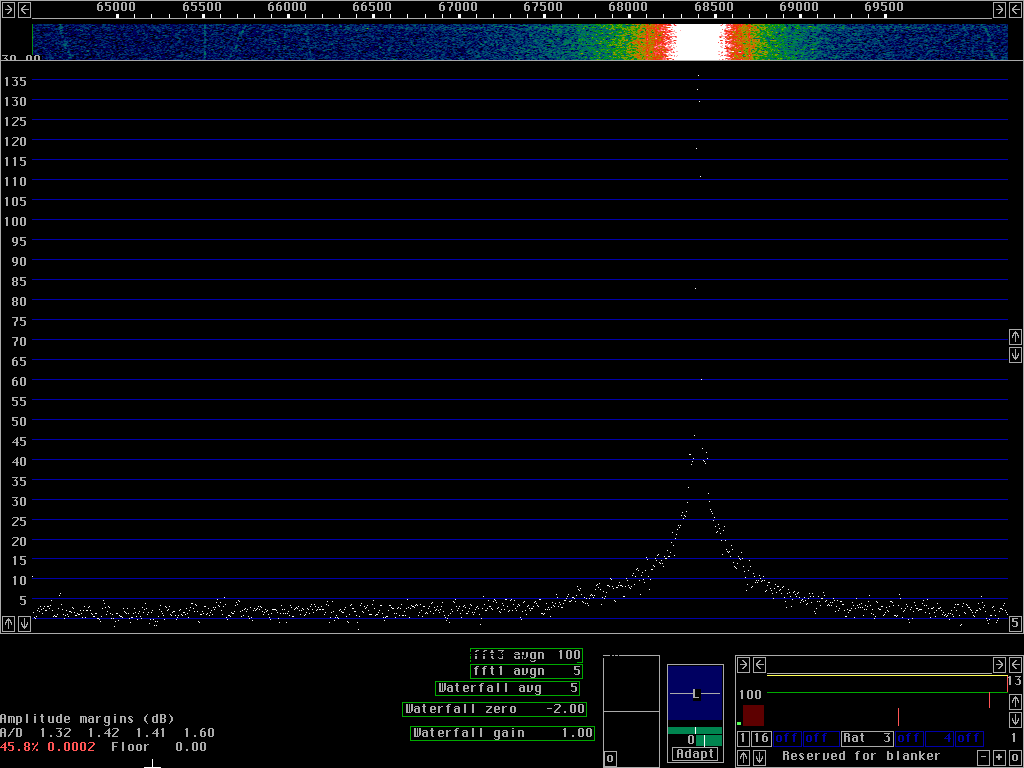Accurate noise floor measurements.The coherent graph contains three dB meters. The upper one gives the largest value since the signal was selected. The middle one gives the average peak amplitude and is useful to determine the amplitude of a CW signal from its key down periods to get a value that is independent of whether dots or dashes are received. The lower value is average power.The dB values are calculated from the baseband signal. To measure dynamic ranges, the second fft must be disabled. Otherwise strong signals will be attenuated by the selective limiter that is associated with the second fft and the noise blanker. To get an accurate measurement for the noise floor, the baseband filter is made rectangular with a bandwidth of 1kHz. Figure 1 shows the screen when a pure X-tal oscillator at 10.7MHz is connected to the 10.7MHz IF input.
|

The following numbers were obtained from the lower dB meter:
Signal/noise in 1kHz bandwidth. -------------------- |Offset | Level | | (kHz) | dB | |------------------| | 0 | 128.6 | | 5 | 11.2 | | 10 | 10.3 | | OFF | 9.6 | --------------------From the table we see that the sideband noise is below 148dBc/Hz at a frequency separation of 10kHz. The noise floor contains only a small fraction of sideband noise since the noise floor only goes down by 0.7dB (18%) when the strong signal is switched off. The sideband noise is therefore somewhere around -155dBc/Hz, an excellent performance obtained by not using any variable frequency oscillator.

For HF bands any combination of two antennas will give an improvement but without any practical experience I can not estimate by how much.
If two channels are used and the offending signal is equally strong in both channels as would be the case when receiving a horisontally polarised signal on a cross yagi in the X-configuration, the noise floor at 10kHz separation will be at -148dBc/Hz. Converted to BDR at 3kHz bandwidth (3dB desensitation) this number corresponds to 116dB - and that is when the desired signal has the same polarisation as the offending signal.
In case the offending signal is in one channel only, as would be the case for a cross yagi in the "+" configuration, the blocking dynamic range is 3dB lower, 113dB.